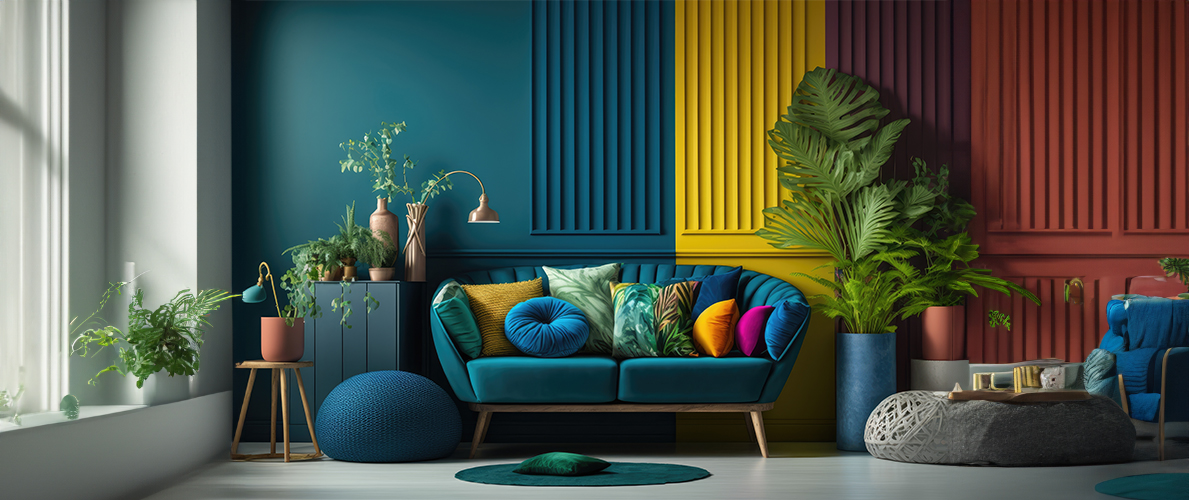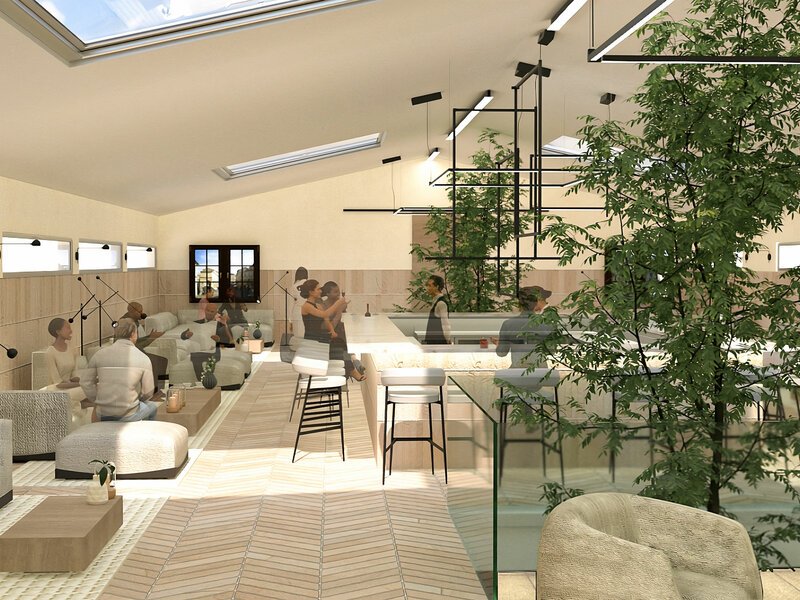Find top miami interior design professionals for customized luxury spaces.
Find top miami interior design professionals for customized luxury spaces.
Blog Article
Transform Your Home With Crucial Concepts of Interior Decoration and Looks
By understanding the effect of color theory and the significance of texture and patterns, one can create spaces that are not only aesthetically appealing but also deeply individual. Achieving this equilibrium includes more than mere decor; it encompasses a calculated setup and an eager understanding of how each aspect engages within a room.
Understanding Color Theory
Color concept is a fundamental facet of indoor style that substantially influences state of mind, perception, and general aesthetic. Recognizing the concepts of shade theory enables designers to develop spaces that resonate mentally with residents while fulfilling functional demands (interior design firms). Shades can be classified into 3 main types: main, second, and tertiary. Each classification plays an essential duty in establishing consistency within a room.
The mental influence of colors is profound; cozy colors such as reds and oranges evoke power and warmth, while trendy tones like blues and eco-friendlies promote peace and peace. The usage of complementary shades enhances visual passion, creating striking contrasts that can boost a room's charm.
Neutral colors, on the various other hand, act as a functional background, enabling various other layout components to beam. It is necessary to think about factors such as lights and the area's objective when selecting a shade palette, as these can alter the perception of colors throughout the day.
Eventually, a well-considered color design can change a room, promoting a sense of comfort and style that aligns with the residents' choices. Proficiency of color theory is, as a result, an important ability for any type of interior developer aiming to produce unified and welcoming settings.
Accomplishing Equilibrium in Style
Exactly how can designers attain a feeling of balance in their rooms? Accomplishing balance in design is basic to developing unified insides.
Unbalanced equilibrium, on the various other hand, counts on varying components that still accomplish a natural appearance. This technique permits more dynamic and casual plans, offering passion while keeping balance. By carefully choosing differing sizes, colors, and appearances, designers can produce a visually compelling room that feels well balanced yet energised.
Radial balance highlights a main prime focus with aspects emitting outside. This design is commonly seen in round formats, where furniture and style produce a natural surround that attracts the eye internal.
Eventually, achieving equilibrium needs thoughtful consideration of scale, percentage, and the connections in between components. miami luxury interior design. By masterfully applying these balance principles, developers can transform spaces into environments that really feel both cosmetically pleasing and functionally harmonious, improving the overall experience for passengers
Relevance of Spatial Awareness

An eager feeling of spatial awareness allows designers to determine focal factors within a room, directing the visitor's attention to essential attributes while maintaining a general sense of unity. It also helps in the critical placement of illumination, which can considerably affect Web Site the understanding of room and mood. In addition, understanding spatial relationships makes it possible for the developer to deal with the particular demands of residents, making certain that each area offers its desired purpose without jeopardizing aesthetic appeals.
Eventually, spatial recognition is crucial for optimizing the possibility of any interior space. By thoroughly thinking about the interplay in between measurements, format, and feature, developers can create atmospheres that not only satisfy useful requirements but likewise stimulate a feeling of comfort and appeal, enhancing the total living experience.
Integrating Texture and Patterns
Welcoming a diverse variety of structures and patterns can considerably enhance the aesthetic and responsive allure of an interior area. The critical usage of different materials-- such as timber, metal, textile, and stone-- produces deepness and interest, making an area feel extra inviting and dynamic. For circumstances, integrating smooth surface areas with harsh textures can develop an equilibrium that draws the eye and involves the detects.
When incorporating patterns, take into consideration both scale and repetition. Big patterns can offer as prime focus, while smaller, refined designs can enhance other components without overwhelming the room. Layering patterns, such as pairing floral paddings with candy striped throws, includes complexity and a sense of harmony if performed thoughtfully.
It is additionally vital to maintain a natural color palette, making sure that textures and patterns collaborate instead of compete for focus. By picking a couple of essential appearances and patterns, you can develop a merged aesthetic that shows your personal design while enhancing the overall setting of the space. Eventually, the careful incorporation of these aspects can change an ordinary area into an innovative environment abundant with character and warmth.
Personalizing Your Area
Developing a room that reflects your personality is important to accomplishing an absolutely welcoming setting. Customization in indoor layout allows you to infuse your unique design and rate of interests right into your home, changing it from a mere sanctuary right into a sanctuary that talks with that you are. Begin by selecting a color scheme that resonates why not try here with your feelings-- strong colors can energize, while soft tones use serenity.
Include artwork and style that show your interests, whether it be travel, nature, or abstract principles. Displaying individual collections, such as books, pictures, or souvenirs, can stimulate cherished memories and produce centerpieces within a space. Additionally, take into consideration personalizing functional items, like upholstered furniture, to straighten with your aesthetic preferences.

Conclusion
To conclude, the makeover of a home with the vital principles of indoor layout and looks necessitates an extensive understanding of shade theory, balance, spatial recognition, texture, and personalization. Each component adds considerably to developing a harmonious and functional living atmosphere - Architecture Firm. By attentively integrating these concepts, people can improve the visual charm and emotional resonance of their spaces, inevitably cultivating a home that shows distinct identifications while giving comfort and usefulness
Report this page